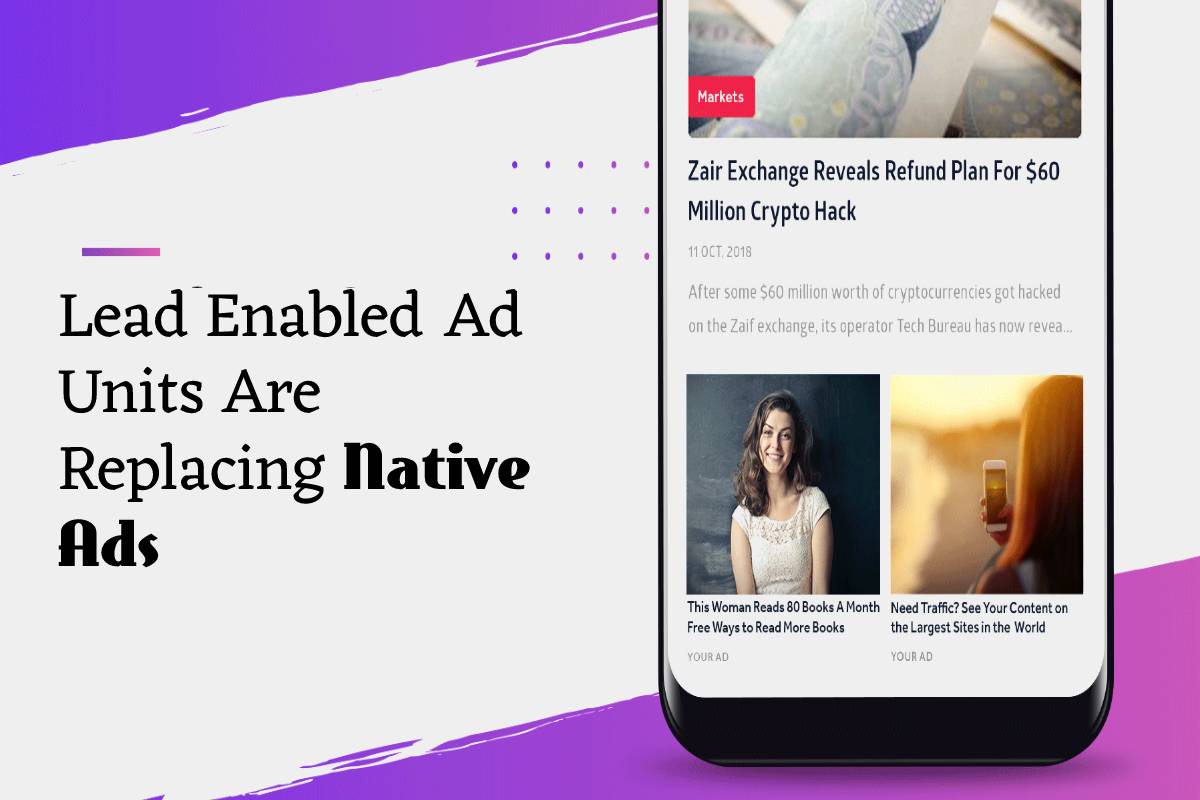For more than a decade, digital native ads have been a popular replacement for the largely unpopular display and pop-up ads. As ad blindness went mainstream, more marketers turned to native ads, which put their content to the audience without being annoying.
Native ads are paid-advertising channels where the ad message matches the format of the content through which it displays. They are popular on social media sites and some websites.
Table of Contents
Types of Native Ads
• In-feed units:
These ads often blend in with other content on a page’s feed, for example, on social media pages as regular posts or in the middle of editorials. Since they integrate easily, it offers a non-interrupted user experience.
• Paid search units
appear at the top of results for specific keywords on search engines like Google, Yahoo, and Bing. Since they are sponsored, they come with additional highlights.
• Recommendation widgets.
As the name suggests, they appear as recommended additional content on pages, usually either at the bottom or to the side. Platforms pace them alongside the intended page content.
• Promoted listings.
These ads appear on shopping websites or search results promoted by other eCommerce sites like Google or Amazon. They are product listings as well and thus blend well with the rest.
Native ads yield multiple benefits like:
• Building Trust And Engagement
Native ads are critical in building audience trust. Already, most people do not trust brands, much less ads. Yet, with native ads, advertisers can share more valuable content less annoyingly. Such is more likely to resonate well with customers.
• Higher Click-through
Statistically, native ads register higher click-throughs than traditional pop-ups or display ads. The ads blend well with the environment around them, allowing the audience not immediately to dismiss it. If they find it relevant, they are more likely to click through and engage further.
• Higher Conversions
Native ads generally registered better performance than display ads and others. Audiences are more likely to click on them, which in turn drives higher conversions over time.
• Tracking is Possible
Native ads can easily be tracked and measured. They generate hard results like click-throughs, impressions, conversions, etc. As such, advertisers can easily measure the effectiveness of their ad campaigns.
However, native ads can also be quite costly for advertisers. For instance, when running Facebook ads, the platform charges you for every click, whether it converts or not.
Additionally, native ads on owned platforms like websites may yield fewer tangible results. And as such, they become less profitable for the platform owners.
Lead Enabled Ad Units
Lead enabled ads are designed mainly for mobile devices and allow users to express interest and become leads with just a few clicks. Instead of the landing page mechanism that display ads adopt, these come with form fields that users can submit right from the same platform.
With these, website owners can earn more than click ad revenue, while advertisers generate more tangible results by attracting more intent-driven actions.
What are the benefits of lead-enabled ad units?
• Ease and convenience
A mobile-friendly prefilled form makes it much easier for interested parties to submit their information. It thus boosts the lead generation process.
• Increased conversions
Lead enabled ad units speed up the interaction process between your audience and their ads. As such, it becomes more likely that they will also purchase a lot faster and easier.
• Saves ad spend
Native ads, display ads, and the like come with major ad spend loopholes, especially in pay-per-click arrangements. Whether intentional or non-intentional, you’ll have to pay the third-party platform for every click on your ads.
However, with lead-enabled ads, the focus shifts to conversion rates. Here, you’ll no longer be just paying for clicks but conversions too, as the key performance indicator.
The Future: Lead-Enabled Replacing Native Ads?
Return on Investment
Lead-enabled ad units will become a suitable replacement for native ads since they focus on lead conversions. Measurements with these are not based on clicks that can sometimes be non-intentional. Instead, they focus on proven/serious leads.
As a result, your advertising budget yields more tangible results as you generate better performance overall. Your ad spend thus becomes a better reflection of your advertising results.
Conversion Revenue
For third-party sites, lead-enabled ad units yield better ad revenue than native ads. They enable you to provide more than just clicks. With the right platforms, you can analyze intent before visitors click through the ads. So, your revenues aren’t centered on meaningless clicks but rather on high performance and conversion rates.
Lead-enabled ad units are excellent for website advertisement and social media platforms. Since users come with varying intent, it can be tricky to measure the impact of ads without these conversion-focused measures.
The Way Forward
Lead enabled ads are slowly replacing native ads. They provide greater returns for advertisers and publishers as they focus on ad performance and not just clicks.
So, advertisers are highly advised to adopt lead-enabled ads over native ads. As consumers grow more unpredictable, it is more efficient to shift performance metrics to direct conversions.
Platforms like Trueoptin, built by Oxtale, a Facebook ads agency in Toronto, are leading the charge. Built with a focus on performance, they create and provide solutions that help you identify intent and capitalize on it to get the best out of your ad spend.
Native ads are still profitable for some businesses. For others, particularly those targeting Generation Y and Z, lead-enabled ads are the future. Create your ad budget and reap high-performance results with intentional paying customers.

